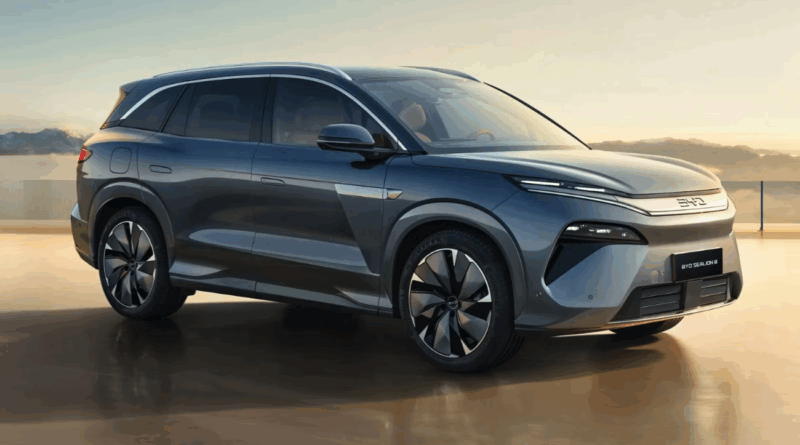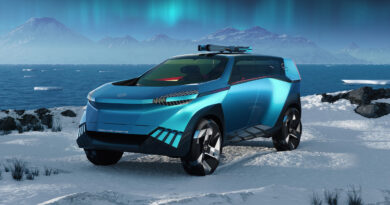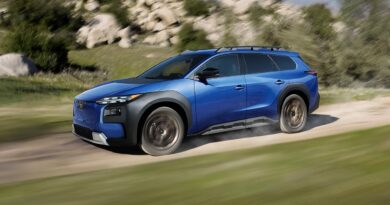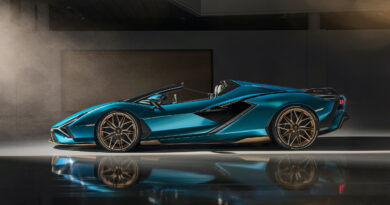Plug-in BYD Sealion 8 arrives to conquer large seven-seat segment as Chinese brand aims to pinch sales from Mazda CX-80, Kia Sorento
The BYD Sealion 8 has been locked in for an Australian debut in the first quarter of 2026 as the Chinese brand’s first seven-seat SUV.
BYD’s flagship plug-in hybrid powered three-row SUV will go head-to-head with the Kia Sorento PHEV and the Mazda CX-80 PHEV.
Following on from the 2026 BYD Atto 2 that will land before the end of this year, the new BYD Sealion 8’s arrival coincides with the Chinese brand’s takeover of the local operation from current independent importer EVDirect.
READ MORE: BYD Sealion 7 Performance review: Plenty of surprises from Tesla Model Y rival
READ MORE: BYD introduces $300K 4×4 flagship! The Yangwang U8L can float, tank turn and is aimed straight at Range Rover
READ MORE: BYD Atto 3 Up patent signals 2025 arrival fo compact electric SUV
Full pricing and equipment have yet to have been announced but the BYD’s first ever seven-seater to be sold in Australia will also compete with new arrivals like the Chery Tiggo 9 that lands in September and a potential plug-in MG QS that might also be sold Down Under.
Positioned above the current five-seat BYD Sealion 7 mid-size SUV, that’s priced from $63,990 (plus on-roads costs), the new Sealion 8 will be the firm’s most expensive model yet.

Based on the car-maker’s next-generation 5.0 platform, the Sealion 8’s design introduces BYD’s latest ‘Loong Face’ frontal styling that replaces the firm’s trademark ‘Dragon Face’ used on the Atto 3 mid-size SUV and the Seal mid-size sedan.
Already on sale in China as the BYD Tang L, the Toyota Kluger-sized SUV measures in at 5040mm long, 1996mm wide and stands 1760mm tall and gets a generous 2950mm wheelbase to maximise cabin space within.
That enables BYD engineers to squeeze in a respectable 675-litre boot that expands to 960L with the third row stowed and up to 1960L with both rows folded.

BYD Australia has confirmed our Sealion 8s will come with a traditional 2+3+2 seat layout but in China the family three-row SUV also comes with a six-seat layout.
When it arrives, two powertrains will be offered Down Under – a DM-i version that blends a 110kW/220Nm 1.5-litre turbo four-cylinder petrol engine with a front-mounted e-motor that produces 200kW and 315Nm of torque.
A second variant, dubbed the DM-P (Dual-Mode Performance) adds another 141kW/360Nm e-motor on the rear axle boosting the hybrid’s total output to a combined 400kW/670Nm.
While the DM-I can only manage an 8.6 seconds 0-100km/h dash, the more powerful Sealion 8 DMP takes just 4.9 seconds to sprint to 100km/h from rest.
In China the DMP version comes with a 35.6kWh lithium-iron phosphate battery that provides for an EV range of up to 150km; that figure is on the more lenient Chinese CLTC test cycle, so expect closer to 100km when rated to the more realistic WLTP standard. Fuel consumption is pegged at 5.6L/100km.
Choose the entry Sealion 8 DM-I and the plug-in hybrid comes with a 19kWh battery that, like the DM-P, can be fast DC charged at up to 71kW, with a 30 to 80 percent top up taking around 30 minutes.
Driver assist tech is a highlight of the Sealion 8 that comes with one Lidar, five radars, 12 ultrasonic sensors and 12 cameras to provide for BYD’s DiPilot 300 autonomous tech that will include a sophisticated adaptive cruise control that is capable of lane keeping and centering.

Inside, the Sealion 8 boasts a large 15.6-inch infotainment system that can be rotated and is combined with a 12.3-inch digital instrument cluster and a large head-up display.
In China leather seats, a large panoramic roof, 11 airbags and a 21-speaker premium sound system are all standard on the most expensive versions, which is likely to be replicated Down Under.
BYD Australia is expected to release pricing and full equipment levels for the Sealion 8 in the build-up to its launch in early 2026.





Why a hybrid? I was hoping for full EV variant to land here in AU, and was a sure purchase for me, disappointed.